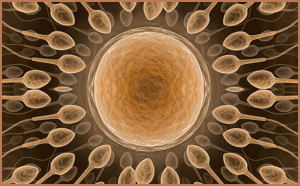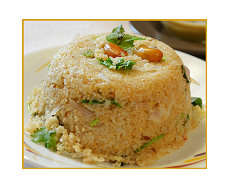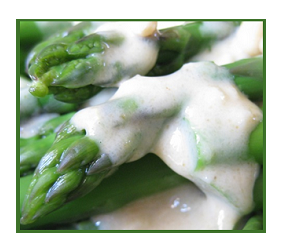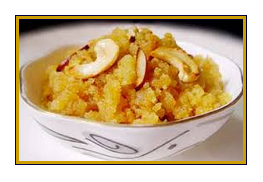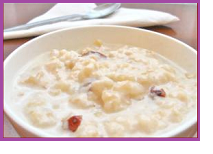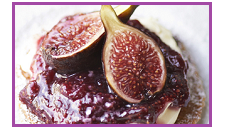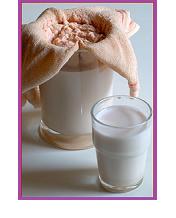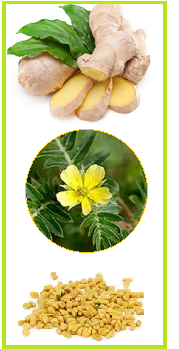Radiation Exposures – Protect Mother and Child with Ayurveda
(written by Ysha Oakes, 5/8/12)
Are you, your friends or clients asking what they can do? Mine are. Whether you believe the news (blackout) indicators that we are ok around Fukushima’s situation or not, we all know we are surrounded by various types of radiation which our ancestors did not have. We also know mothers and babies are among the most vulnerable. As with any “season” of life or weather, specific guidelines are wisely used after childbirth. Ayurvedic medicine offers adaptive advice for using the resources found generally valuable with radiation exposures.
Ayurvedic physician, Rama Kant Mishra, BAMS and MD India, says radiation has similar impacts to being struck by lightening as described in the ancient texts. Disturbance and pollution is to the ether or space element, whose power and domain is nuclear. Vata dosha is the combined metabolic effects of ether and air elements, and is so high after birth naturally. Mother and newborn need special care in many ways already for this – integrating, grounding, comforting, warming, gentle cleansing, rebuilding, transformational nutrition and vibrational purity in body and cell nuclei as well as emotions.
Radiation burns our ojas – the finest product of digestion which gives juiciness, immune strength, and spatial, vibrational and biological intelligence for coherent health in the tissues. “Soma”, related to neurotransmitters for happiness, can be as if chemically burned also. Prana or Qi – life force is easily deranged. Cellular intelligence or tejas in the nucleus becomes overstimulated, confused and can disturb DNA. “Tejas burning ojas” dictates reducing or cleansing pitta, increasing “sattva”, building therapies, and more. “Radiation burns our cells by creating too much free radical damage,” confirms Mike Adams of naturalnews.com.
There are mother/baby schedules for sudden high exposure, administering KI (potassium iodide) but little else is clear. That therapy is for the first few days of airborne exposure anyway, and we have much more to address. Continued and cumulative exposure is a given. Radioactive iodine has a short half life; but others do not, and exposures are abundant from many sources before Fukushima. AP reports Japan admits to a meltdown, and the planetary impact will last many years. We all should do our homework.
We need to adjust care for the highly sensitive 6-8 weeks after birth. A mother bridges the worlds and needs help shifting from stress to rest and digest hormones, grounding, integrating and rejuvenating. Nutritional needs are high and ability to metabolize food and supplements is weaker. With much internal “work”, her enzyme sequencing (from eating one meal to the finest products of tissue nutrition) is 6 weeks minimum, not the usual 4 for most people. Lactation is one of the first products of digestion, yet breastmilk quality varies with maternal diet and affects Baby. Mother’s milk is blessedly rich in ojas, tejas and prana when balanced.
Postpartum caveats – weave these into any supplement use
Digestive spices – well cooked (not raw) garlic, pepper, ginger, cumin, fennel, fenugreek, dill, and others help enzyme activity and free radical reduction. Mothers thrive on warm, moist, and freshly made not fermented foods at this time, rebuilding not cleansing, and generous amounts of clarified butter, sesame oil, or occasional other good fats. Sweet, milky, soupy, iron rich and mushy foods in sequenced transitions with high calorie normal cooked diet take 6-8 weeks. Some sweet fresh antioxidant fruits work well also. Some super-foods and herbs are contraindicated, some really help protect tummies, hearts, minds and immune systems.
Dry, old, cold and most raw foods create gas, constipation and feelings of separation, emptiness and dissatisfaction for Mama and aby. So we avoid capsules of dry herbs, dry snacks, cereals, protein powders, ground flax, toast, most dried fruits – things which pull moisture and are rough on delicate tissues. Maternal body/mind is as delicate as Baby’s – so we start with mush! Oily is opposite of dry; liquid opposite of dense.
Build ojas with special foods and herbs, generous amounts of clarified butter in food and warm drinks, and warm spiced organic grass fed cow’s milk or almond milk for vegans. At Baby’s 10 day growth spurt, one can usually begin rejuvenative tonic herbal foods like shatavari kalpa, ground almonds, gum acacia, coconut, dates and saffron with liver enzyme supportive ginger, pippali or a little clove.
Cleansing
As usually considered, cleansing is a depleting therapy, no matter how gentle. Extra wastes from pregnancy and labor are cleansed differently. We use herbals, foods and lifestyle which avoid usual cleansing and hectic lifestyle depletions.
Cleansing ether element means several things. It even means nourishing our place and space in the body and universe with gentle, balancing routines, less movement and change for mamas. Warm oil massage enhanced with highest quality essential oils, purity of foods, simple lifestyle, TLC, connectedness, bonding in love help a lot. Avoid the winds, and cold foods and drinks.
Fats, especially ghee, can cleanse kindly and lubricate mood, hormones and energy. Extra dietary ghee more than other fats, helps pull toxins from the tissues and cells, buffer charged particles, and slide them out safely. Use only organic fats, very generous amounts unless cholesterol, liver or gall bladder contraindicates.
Tikta Ghee – a preparation of several bitter herbs, is highly advised by Dr. Vasant Lad for even pregnant and early postpartum mothers to help cell and nuclear proteins best counter effects of radiation. 1 tsp, twice a day; can be used in food. The ghee helps offset the vata increasing bitter effect.
Gently reduce vata with dashamoola decoction twice a day.
Strengthen “agni” – the body’s digestive and transformative processes. Spices strengthen the our ability to burn waste products, and handle needed fats and other foods.
Used with children after Chernobyl, Apple pectin tested about 63% rate of bowel removal of radioactive matter while “healthy diet” was in the low teens. Phytotherapist Ayurvedic teacher Sonya Massoco explains that pectin builds the liver “bhut agnis” – enzymes which convert food into 5 element qualities for tissue nutrition. Apple pectin comes in capsules (avoid after childbirth), or 10% pectin apple fiber – inexpensive. Both will probably create high vata mama and baby gas unless you add chai type spices and hydrate well in hot water or juice for at least 10 minutes. Try in cider spiced grape or other fruit juice or stewed fruits, not in dairy or cold. Add ¼ tsp ginger, pinch salt and tsp of ghee; serve warm.
Fiber helps remove radioactive toxins from the GI tract, so does bentonite clay; both bind and can constipate. Best after 2 weeks and when bowels move easily – then some non-rough well hydrated fiber can be used. Avoid bran, flax or dry psyllium. Start bentonite with just ¼ tsp, building to ½, in hot water, soup, juice or nut milk .
Keep bowels moving – extra challenging the first few days – with oiliness, warmth, moisture, and mushy cooked foods. Laxatives risk excess bleeding and hemorrhage increasing apana vayu, our downward subdosha of vata. Avoid senna type products, even gentler Triphala or Bhumyamalaki for 3 weeks or more. Serve hot stewed, iron rich fruits (raisins, figs, blueberries, cherries, apricots) with spices and, did I mention, lots of ghee?
Super nutrient foods
Smoothies – Avoid most of them, and avoid yoghurt 1-2 months except in lassi.
Cold or room temperature, wrong foods and poor food combining will not be handled well, creating gas and wasting energy and money.
Chlorella helps with DNA repair and protection. Use only the “broken cell” type, seasoned (ginger is super postpartum support), mineral salt pinch, hydrate well (delishious with warm almond milk, ¼ tsp curry powder, black pepper or ginger, or in soup), serve warm, for mothers add a teaspoon of sesame or sunflower oil – coconut is too cold energetically now.
Sea greens, especially Spirolina, with bioavailable iodine, protects thyroid receptor sites and needs similar treatment to chlorella, without fruit.
Seaweeds, high in iodine, really help the body alkalize, are mineral grounding and soothing, nourish softness and rejuvenation. Cooling, they must be seasoned well, cooked, well hydrated and oiled to prevent results of weak digestion. Harvested in coastal waters and Japan, quality and source is extra critical now. Helpful pulling enzyme inhibitors from legumes, we regularly add to maternal soups.
Miso
Although degenerative (“tamasic”) in energy when regeneration is Nature’s plan for mamas, I am recommending this easily digested food now. Dr. Lad advises miso soup to help with radiation. Add sesame oil (tasty with toasted) and well cooked garlic, or some curry powder at a minimum.
Extra moist rice can be served with carrot and zucchini strips, lime juice, fresh ginger and roasted garlic tahini and sauce for oriental flair in toasted nori, after 2 weeks for variety.
vitamin D3,not D2
Use liquid drops, or mix the bland powder from capsules into warm liquid for low level exposure protection. Quality makes huge difference, also dosage. Dr. John Douillard and others are recommending adult dosage of 10,000 IU daily until levels are up. Most folks are sadly low. “Calcitriol is the form of vitamin D that activates the body’s Vitamin D Receptor (VDR), which allows gene transcription to take place and the activation of the innate immune response,” reports radiological health expert Daniel Hayes in the Science Daily news, 2008.
Antioxidants
For most antioxidant support, warm and spiced fruit/juices may offer best bio-delivery. Helping against free radical damage, some of those expensive but high quality drinks are great, but serve with splash of hot water to take the chill off, and avoid fruit/veg/protein combinations. For mothers I add pinch mineral salt and ginger or clove powder and serve warm. Pittas (I call them the hot blooded mamas), no salt or ginger; they do better with cardamom, saffron, rose in grape, a little pomegranate, acai or other sweet (non citrus) fruit bases. They also need vata balancing qualities and must avoid cold. Children tend to love these juices of course – offer in moderation.
Vitamin C sources are best liquid or from fresh fruits, powder can be added, though citrus should be avoided for 2-3 weeks and excess can increase pitta, heat and looseness of the bowel, risking hemorrhage.
Organic citrus peel and essential oils of citrus are researched to build liver master antioxidant glutathione taken internally. Grate zest into fruit stews, smoothies or soups for appetizing benefits, or gentle dose – 3 drops orange oil in a capsule or fruit bowl, up to 3 times daily after meals; also helps digestion.
Selenium is also recommended to help with radiation.
Ghee and Raw Honey is a special medicine for ojas, tejas, and/or prana when used equal parts by volume (1 tsp each with ¼-1 tsp herbs), according to Dr. Lad Mix fresh with appropriate root, seed, fruit or bark herb powders as advised by your AyuDoula or Ayurvedic practitioner. Measure it; please note that equal parts by weight is toxic, by volume, nectar and gives deep tissue delivery..
Prana
Mothers benefit so much from gentle, no breath retention alternate nostril pranayama and perhaps a little ujjai, bhramari breathing. Most breath practices are contraindicated for pregnancy and early postpartum. Even with a baby falling asleep in our arms – though not a classical posture, intend these deeply valuable practices including meditation daily.
The prana of the bond with a newborn is profound. Ground this subtlety in gentleness and rest, center and protect it in prayer and so-hum or other effortless meditation and breath practice
I hope you like aromatherapy. Use organic, low heat and pressure distillated oils. Their high prana balancing, oxygenating, emotional and immune support is a blessing to many mothers; please explore safety and quality issues; over 90% of essential oils sold are not grown on the planet, even labeled “100% pure, natural or therapeutic grade”, and are likely to be petrochemical based or laced.
Rosemary Essential Oil Found to Offer Best Protection against Radiation Poisoning – I favor a blend with rosemary, melaleucas and clove. Note these are quite warming. I am very picky about my sources and over the last 14 years, have favored Young Living Essential Oils, having seen in depth their fanaticism for quality. You will need a member referral number to order.
Sesquiterpene rich oils like Vetiver (97%), Sandalwood (90%), Patchouli (71%), Myrrh (62%), Ginger (59%), as well as German Chamomile, Spikenard, and Frankincense (8%) deprogram miswritten code in the DNA, according to David Stewart, PhD. Monoterpenes, in many essential oils including Spruce (38%), Valerian (34%), and Juniper (14%) as well as Fir and Pine reprogram the miswritten codes in DNA.
Fresh sweet fruits, rest, gentle sunlight and love provide prana too.
This is not meant to be a comprehensive discussion, only representing a few of my favorites with important adaptations for mothers and newborns. Do look at the side effect list of high doses of iodine online and apply balancing qualities. Delicious, soothing, warming and well digested special nutrient preparations can give a mother extra tools through these times.
Tending a mother’s subtle body with prayer, transcending into peaceful meditation, gentlest pranayama (simple alternate nostril with no breath retention, and simple ujjai), restorative yoga, and quiet community service from her village are deeply practical and nourish heaven on earth for us all. All help cleanse, strengthen, re-align, connect and refine the ether element, prana, cellular intelligence and ojas, and help all layers of body, mind and family well being to re-store health, wholeness and bliss.

 The Center for Sacred Window Studies is a brand new school started by our beloved mentors and students of the original Sacred Window School–all of them professional Ayurvedic Postpartum Doulas. This is where you’ll find essential training as an Ayurvedic Postpartum Caregiver. The curriculum draws on the Sacred Window principles, but this new endeavor has a currency and freshness that only a live program can provide. Their courses are offered online via Live webinars and include lots of inspiring and practical homework — including cooking, infant massage, and self-care using Ayurveda. Christine Eck and her team are doing a wonderful job of co-creating this enterprise. We all wish them the best, and hope that our visitors will visit them!
The Center for Sacred Window Studies is a brand new school started by our beloved mentors and students of the original Sacred Window School–all of them professional Ayurvedic Postpartum Doulas. This is where you’ll find essential training as an Ayurvedic Postpartum Caregiver. The curriculum draws on the Sacred Window principles, but this new endeavor has a currency and freshness that only a live program can provide. Their courses are offered online via Live webinars and include lots of inspiring and practical homework — including cooking, infant massage, and self-care using Ayurveda. Christine Eck and her team are doing a wonderful job of co-creating this enterprise. We all wish them the best, and hope that our visitors will visit them! The Ayurved Sadhana, Ayurvedic Teaching Institute has developed an in-depth Postpartum Ayurvedic Doula certification program, part online and part hands-on — based in Boulder, Colorado. Dr. Bharat Vaidya and his wife Anupama Vaidya were deeply involved in shaping The Sacred Window School with Ysha, and have been working very hard over the past several years to develop a respected and credited school for Advanced Ayurveda and Ayurvedic Doula training. Be sure and click through to see what really wonderful things they are up to!
The Ayurved Sadhana, Ayurvedic Teaching Institute has developed an in-depth Postpartum Ayurvedic Doula certification program, part online and part hands-on — based in Boulder, Colorado. Dr. Bharat Vaidya and his wife Anupama Vaidya were deeply involved in shaping The Sacred Window School with Ysha, and have been working very hard over the past several years to develop a respected and credited school for Advanced Ayurveda and Ayurvedic Doula training. Be sure and click through to see what really wonderful things they are up to!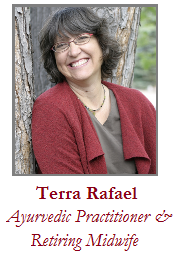 Terra Rafael, one of Sacred Window’s original faculty and a retired Ayurvedic midwife, has been working on new classes, a website, and her Wisewomanhood School. Here you will find classes that focus on “optimizing female functioning – mind, body and soul – using natural remedies, Ayurveda, astrology, and inner work.” Wisewomanhood is (and has always been) for Women and the Practitioners who serve them. You’ll find a growing number of inspiring webinars, books and other treats on her website.
Terra Rafael, one of Sacred Window’s original faculty and a retired Ayurvedic midwife, has been working on new classes, a website, and her Wisewomanhood School. Here you will find classes that focus on “optimizing female functioning – mind, body and soul – using natural remedies, Ayurveda, astrology, and inner work.” Wisewomanhood is (and has always been) for Women and the Practitioners who serve them. You’ll find a growing number of inspiring webinars, books and other treats on her website.
